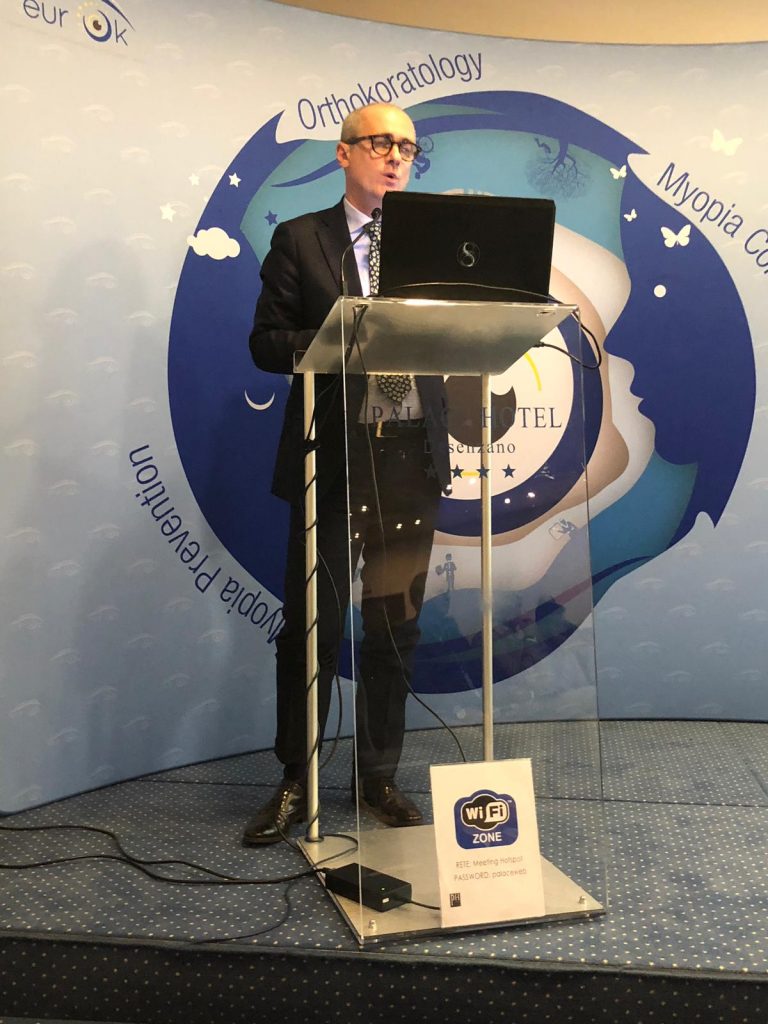10 Things I Wish I Knew Before Graduating Optometry School
Part Three

by Marco Tovaglia
When you graduate everything seems easy, you cannot wait to put your education into practice, not thinking you will encounter any particular difficulties in doing so. The reality, however, is a whole different story.
1. Two of us
The first case that I found myself having to face as a new contact lens practitioner was of keratoconus. This is certainly not easy for a novice, and, above all, it was twin homozygous children of 8 years. I was in cold sweats at the time, but the satisfaction is that now they are adults and married with kids, and they’re both still wearing my contact lenses, replaced annually. The interesting point is that, despite being homozygous twins, their keratoconus is of different appearance and severity.
2. I’ll draw you a picture…
One of the most curious aspects of my contact lens work is trying to imagine the patient’s vision. I remember a very peculiar case of a boy who wanted to show me with a drawing how he perceived the letters of the Snellen chart, distorted because of keratoconus. I have, in that way, understood more concretely what it meant to see badly.
3. A sip of water
Among the weirdest and funniest things that have happened to me is the case of a girl who I fitted with conventional soft toric lenses. One night, late back from the disco, not wanting to dwell on the post-removal maintenance, the girl put the lenses in a glass of water. The next day her father, saw the glass of water in the kitchen and drank it. When his daughter told him it contained her contact lenses, the worried parent rushed to the emergency room to explain what happened. Nothing serious, of course, except having to purchase two new contact lenses. An expensive glass of water!
4. A wonderful mission
Nothing is more satisfying than being able to give back quality vision to patients with corneal irregularities. The “Wow!” effect and the strong emotion expressed by the wearers, after a successful contact lens fitting is something that has no price for a vision care professional.
5. Sandwich approach
In our practice, the philosophy of a layered approach is a useful example to explain to the patient what you can expect in an application of contact lenses. Especially in multifocal contact lenses, there is a lot of work done in the perspective of the sequence of situations in which the wearer may find himself. Despite good preliminary briefing of the patient, as soon as he wears the first lens to the right eye, while you are still rinsing the left, you see him doing reading tests closely and shaking his head!
6. It’s not all taken for granted
Sometimes the difficulty in our work is trying to make the patient understand how contact lens fitting is not a trivial process. The patient does not know what complex work is behind an application of a contact lens and can sometimes take their improved vision for granted.
7. The best material
The best material for a contact lens is not always the most expensive or sophisticated in a manufacturer’s portfolio. The best polymer can be the one that suits the tear conditions of the patient and allows contact lens wear without corneal pain and absence of staining. This aspect is not always understood by some practitioners who sometimes reject the idea that the best solution can even be the simplest.
8. 20/20 for a perfect view!
For many years I believed that 20/20 was the goal to achieve in order to restore the best vision. In fact, over time, I have become increasingly convinced that the unit of measurement of visual capacity does not correspond to an optimal visual quality. How much you can see is certainly more important than what you perceive. The testimony of patients who tell you they do not see well despite achieving 20/20 on the chart is significant. Especially in irregular corneas, fitted with hard contact lenses, there may remain a portion of higher-order aberrations likely to impair the quality of the vision. Another thing I’ve learned is that if a person sees “only” 20/40, they are not said to be dissatisfied with their vision; the way they perceive their own spatial dimension can, for them, be satisfying despite a low visual acuity according to our tests.
9. Sight is life
Seeing well is fundamental and qualifies our existence. Nevertheless, there are people who place health and the safeguarding of their own vision as a marginal aspect to which attention should be paid. In some cases material interests take priority over taking better care of visual hygiene; spending on new devices or clothing seems to be a priority, instead of deciding on a renewal of contact lenses or the adjustment of uncorrected glasses. This is something that leaves me both puzzled and disappointed.
10. Associations and congresses
When I started my professional career I felt the need to join associations in the field of contact lenses with the intention of improving my knowledge and keeping up to date. The youthful recklessness saw me take this step without realising that it could represent an important detail for my technical training. Over time, active participation, also as a lecturer, has enabled me to understand the importance of discussion with colleagues, considering the aspect of the exchange of views as a key element in measuring one’s own abilities. Ours is a wonderful job that will never cease to fascinate those who carry it out daily with passion and dedication.
Thank you to Marco Tovaglia for contributing to Global Insight.

Marco Tovaglia graduated in Optics in 1985. Since 1987, Professional Service Manager in important national contact lens labs. Actually works in TS Lenti a Contatto – Vittuone (MI). Marco is a Fellow of BCLA, SOPTI member and EUROK member. He is also co‐author in fluoresceinical RGP contact lens evaluation panel published in Contact Lens Anterior Eye “Consensus on recording of gas‐permeable contact lens fit”.
